Recombinant Human CD40 protein(Met1-Arg193), hFc-tagged
| Cat.No. : | CD40-493H |
| Product Overview : | Recombinant Human CD40 (NP_001241.1) (Met1-Arg193) was expressed in HEK293 with the Fc region of Human IgG1 at the C-terminus. |
| Availability | April 18, 2025 |
| Unit | |
| Price | |
| Qty |
- Specification
- Gene Information
- Related Products
- Case Study
- Application
- Download
| Species : | Human |
| Source : | HEK293 |
| Tag : | Fc |
| Protein Length : | 1-193 a.a. |
| Form : | Lyophilized from sterile PBS, pH 7.4. Normally 5 % - 8 % trehalose, mannitol and 0.01% Tween80 are added as protectants before lyophilization. |
| Bio-activity : | Immobilized human CD40L-His at 10 μg/mL (100 μL/well) can bind Human CD40-Fc. The EC50 of Human CD40-Fc is 10-30 ng/mL. |
| Molecular Mass : | The recombinant human CD40 consists 414 amino acids and predicts a molecular mass of 46.2 kDa. As a result of glycosylation, the apparent molecular mass of human CD40 is approximately 54.1 kDa in SDS-PAGE under reducing conditions. |
| Endotoxin : | < 1.0 EU per μg protein as determined by the LAL method. |
| Purity : | > 95 % as determined by SDS-PAGE. > 95 % as determined by SEC-HPLC. |
| Storage : | Samples are stable for up to twelve months from date of receipt at -20°C to -80°C. Store it under sterile conditions at -20°C to -80°C. It is recommended that the protein be aliquoted for optimal storage. Avoid repeated freeze-thaw cycles. |
| Reconstitution : | It is recommended that sterile water be added to the vial to prepare a stock solution of 0.2 ug/ul. Centrifuge the vial at 4°C before opening to recover the entire contents. |
| Gene Name | CD40 CD40 molecule, TNF receptor superfamily member 5 [ Homo sapiens ] |
| Official Symbol | CD40 |
| Synonyms | CD40; CD40 molecule, TNF receptor superfamily member 5; TNFRSF5, tumor necrosis factor receptor superfamily, member 5; tumor necrosis factor receptor superfamily member 5; Bp50; p50; CD40L receptor; CD40 type II isoform; B cell-associated molecule; B cell surface antigen CD40; B-cell surface antigen CD40; CD40 antigen (TNF receptor superfamily member 5); tumor necrosis factor receptor superfamily, member 5; nerve growth factor receptor-related B-lymphocyte activation molecule; CDW40; TNFRSF5; MGC9013; |
| Gene ID | 958 |
| mRNA Refseq | NM_001250 |
| Protein Refseq | NP_001241 |
| MIM | 109535 |
| UniProt ID | P25942 |
| ◆ Recombinant Proteins | ||
| CD40-174HAF488 | Recombinant Human CD40 Protein, Fc/His-tagged, Alexa Fluor 488 conjugated | +Inquiry |
| CD40-628H | Recombinant Human CD40 Protein | +Inquiry |
| Cd40-8726RAF555 | Recombinant Rat Cd40 Protein, Fc-tagged, Alexa Fluor 555 conjugated | +Inquiry |
| CD40-2222H | Recombinant Human CD40 protein, His-Avi-tagged, Biotinylated | +Inquiry |
| CD40-108HAF647 | Active Recombinant Human CD40 Protein, Fc-tagged, Alexa Fluor 647 conjugated | +Inquiry |
| ◆ Cell & Tissue Lysates | ||
| CD40-001CCL | Recombinant Canine CD40 cell lysate | +Inquiry |
| CD40-1262RCL | Recombinant Rat CD40 cell lysate | +Inquiry |
| CD40-1254CCL | Recombinant Cynomolgus CD40 cell lysate | +Inquiry |
| CD40-2617HCL | Recombinant Human CD40 cell lysate | +Inquiry |
| CD40-1831MCL | Recombinant Mouse CD40 cell lysate | +Inquiry |
Case 1: Yu JS, et al. Invest Ophthalmol Vis Sci. 2021
In diabetic retinas, CD40 causes inflammation by increasing in retinal endothelial cells. This study found that expressing CD40 in these cells can trigger inflammation in diabetic mice. Genetically modified mice with CD40 in endothelial cells showed higher ICAM-1 levels and inflammation, similar to regular diabetic mice, but not in those lacking CD40. While normal diabetic mice increased inflammatory markers like TNF-α, the modified ones with CD40 didn't. CD40 activation raised ICAM-1 but didn't boost other inflammatory markers or ATP release, and it did not increase P2X7 mRNA levels like in typical diabetic mice.
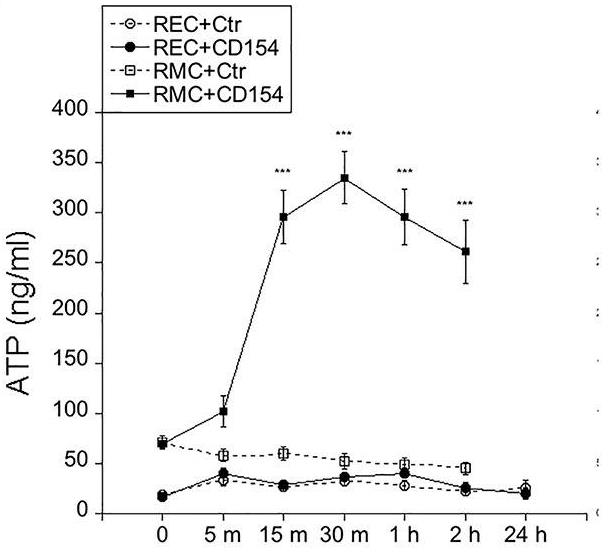
Fig1. CD40-expressing retinal endothelial cells were incubated with or without CD154 and concentrations of extracellular ATP were measured at different time points.
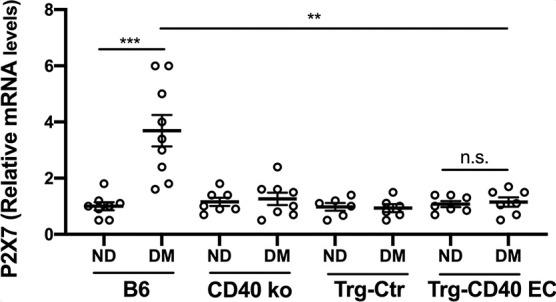
Fig2. CD40 expression in endothelial cells from diabetic mice does not lead to upregulation of P2X7 in the retina.
Case 2: Portillo JA, et al. Invest Ophthalmol Vis Sci. 2014
CD40 is essential for retinopathies linked to diabetes and ischemia/reperfusion. This study explored how CD40 incites inflammation in retinal cells to find new retinopathy treatments. By modifying retinal cells to affect CD40's interaction with TRAF proteins, researchers found that disrupting these interactions decreased inflammation markers like ICAM-1 and MCP-1. In diabetic mice, CD40 was crucial for MCP-1 mRNA increase. CD40 activation also raised PGE₂ and VEGF in Müller cells, but altering TRAF sites lessened this effect. Blocking CD40's TRAF interactions completely stopped these inflammatory responses.
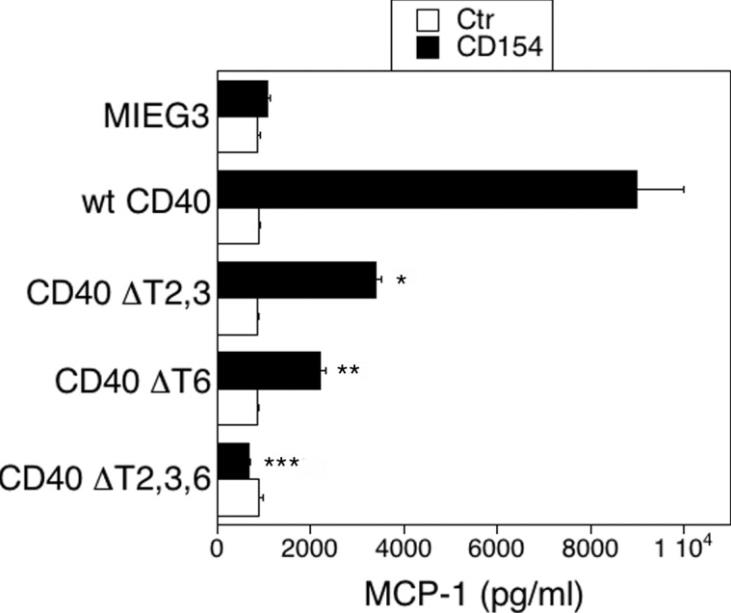
Fig1. Role of CD40-TRAF binding sites on MCP-1 production in HREC.
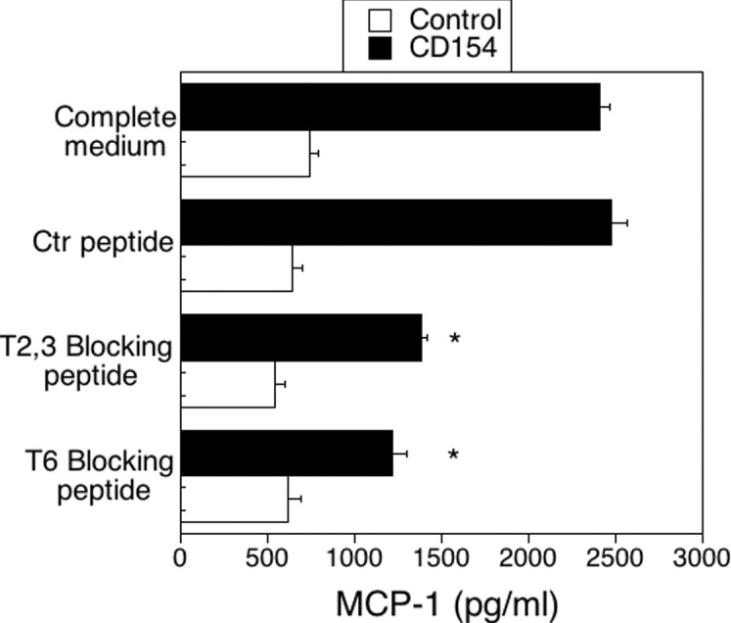
Fig2. Effects of CD40-TRAF blocking peptides on MCP-1 production in HRMC stimulated with CD154.
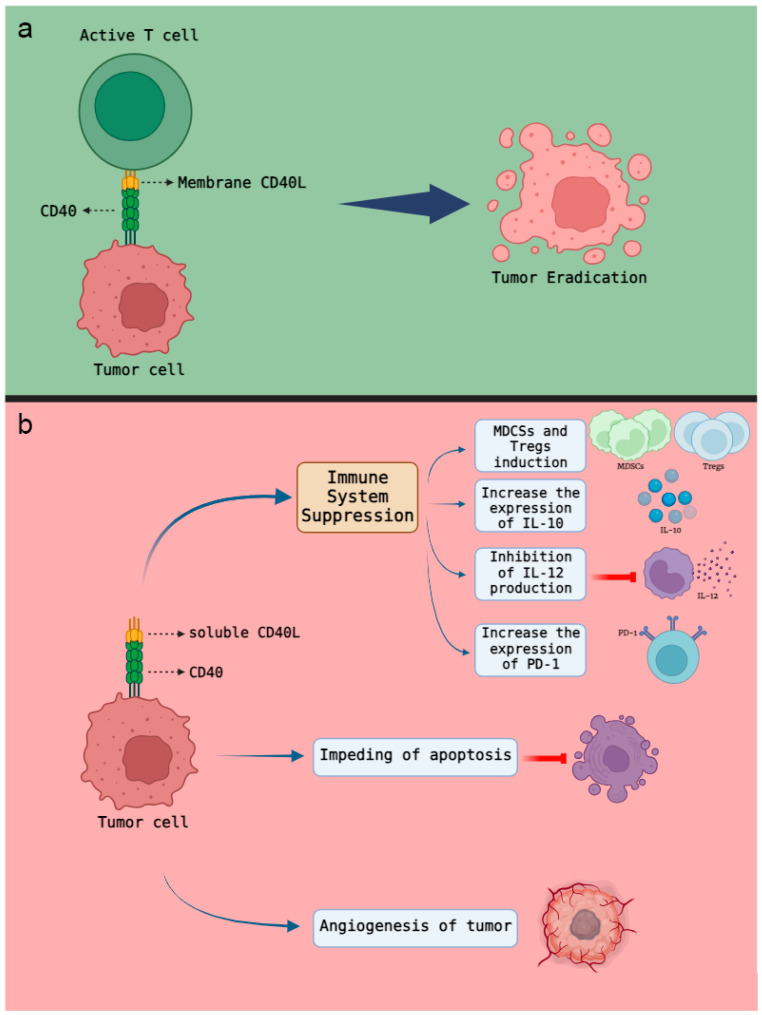
Fig1. The impact of different forms of CD40L on tumor cells. (Alireza Pazoki, 2024)
Not For Human Consumption!
Inquiry
- Reviews
- Q&As
Ask a Question for All CD40 Products
Required fields are marked with *
My Review for All CD40 Products
Required fields are marked with *
Inquiry Basket


